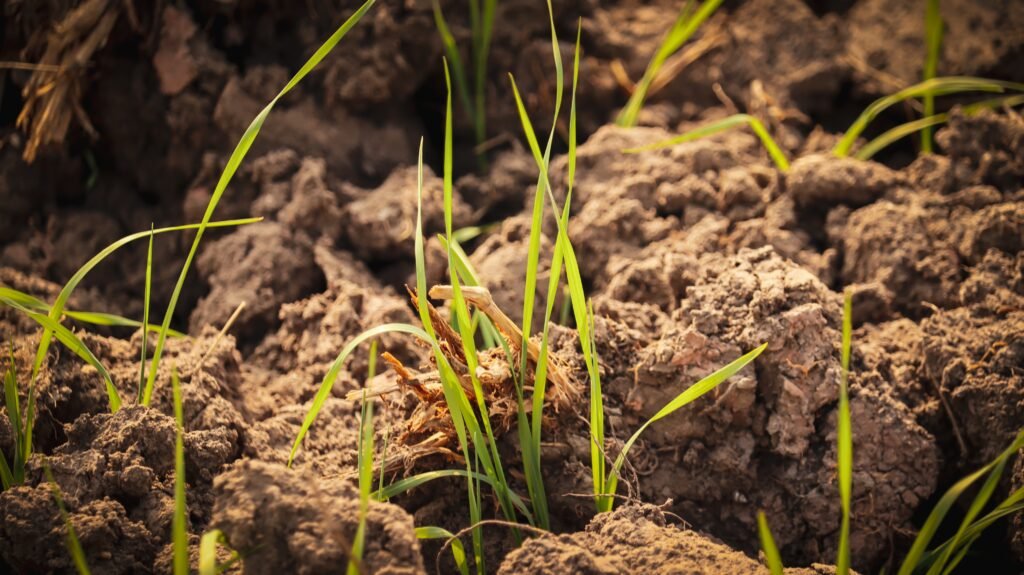-
FREE P&P ON ORDERS over £25 - £2.50 P&P ON ORDERS under £25
We are unable to deliver to N.Ireland, Europe or The rest of the worlD

Regenerative Farming: The New Buzz Words of Farming?
Regenerative Farming: The new buzz words of farming?
You may have seen that the term ‘Regenerative farming’ is being used alot recently. It is THE trendy term, but what exactly is it and can it help to improve the farming industry?
What is regenerative farming?
Regenerative farming and organic farming are actually both similar in nature. They both place a great importance on soil health but we could argue that regenerative farming takes this to another level. Regenerative farming is all about taking less from the land than we put into it. It is about rebuilding soils, increasing biodiversity and it seeks to reverse or slow down climate change through carbon sequestration.
Regenerative farming actively discourages the process of tilling. It aims to keep carbon locked into the soil rather than releasing it back into the atmosphere. No till farming also protects the life within our soils. Due to the minimal soil disturbance it can even help in the never-ending fight against weeds as it allows the weed seeds to lay dormant. It is for these reasons that no dig (no till) gardening is becoming more and more popular on our allotments and in kitchen gardens.
The importance of healthy soil
A living, healthy soil acts like a sponge. It holds onto moisture which benefits us in times of extreme weather systems. By holding onto moisture, our soils retain the vital nutrients that feed our plants and soil life. It also helps to reduce soil erosion.
Healthy soils can also help in the fight against climate change by capturing and storing carbon from the atmosphere. Carbon helps to improve soil structure and moisture retention as well as providing food for our soil micro-organisms. Our plants capture carbon from the atmosphere and turn it in to sugars during photosynthesis. These sugars feed the plant and also filter down through the plant roots into the soil to feed the soil life in exchange for nutrients the plant needs.
The impact of regenerative farming on biodiversity
As with organic farming, regenerative farming also promotes biodiversity and actively encourages the creation of eco systems for insects, pollinators and wildlife. Farmers plant diverse hedgerows and pollinator highways – the thought process is that by creating self-sustaining eco systems we can reduce pests in a natural way rather than resorting to dangerous chemicals to fight them which will in turn damage our soils and potentially even us humans.
Regenerative farming tries to reduce inputs by using natural resources. It promotes the use of natural mulches and compost production. It also aims to increase organic matter by growing green manures. Sounds idyllic, doesn’t it?
Personally, I believe that any trend that focuses on soil health and spreads the word about its importance is a good thing. If consumers place a greater importance on soil health, the government and farmers will have no choice but to eventually follow suit although this will only happen if the population as a whole start to understand and really prioritise soil health.
Concerns about greenwashing
It does concern me that the term ‘regenerative farming’ is not governed in any way. This is not necessarily a bad thing as governance does tend to come at a cost, however a lack of governance could lead to ‘greenwashing’. Greenwashing is where companies use the term in their marketing in a way which can mislead customers. Greenwashing has the potential to lead customers into thinking that products have been produced in a certain way or to a certain standard. We have see this a lot when companies talk about their eco or sustainability credentials. Consumers have to be extra careful about reading into the headline.
A simple google search already produces a multitude of answers as to what ‘regenerative’ farming actually is. I fear that it could become a throw away term far too soon rather than be the thought provoker we need. The term has the potential to really catch on and help to transform the farming industry.
What are your thoughts on regenerative farming? Do you believe the hype?
Email your thoughts to us at hello@heritageorganicseeds.com

